Title:
Reactive wetting properties of TiO2 nanoparticles and surfaces predicted by ab initio molecular dynamics simulations
Abstract:
Wet titanium dioxide (TiO2) surfaces have wide applications in photocatalysis, biosensors and nanomedicine. Understanding water adsorption on TiO2 is the key not only to efficient water splitting (as made use of in hydrogen gas production) but also to optimize the adsorption and functionalization of larger molecules on TiO2, which is mediated via strongly bound surface waters. We have performed extensive ab initio molecular dynamics simulations of wet TiO2 nanoparticles, and of TiO2 surfaces at full hydration.
Chemical and physical adsorption of water on TiO2 nanoparticles was studied as function of the water content, ranging from dry to wet nanoparticles with monolayer coverage of water. The surface reactivity was shown to be driven by surface defects, with the local coordination number at the defect being the key factor to whether water adsorption proceeds through dissociation or physisorption on the surface. On TiO2 surfaces, a two-regime model was used to describe near-surface waters in terms of “hard” (irreversibly bound) and “soft” (with reduced mobility but orientation freedom) hydration layers. We identified reaction pathways with the TiO2 surfaces being either passive (catalyst) or active (surface cleavage), and showed that water reactivity is enhanced by varying the water coverage, leading to concerted dissociation between different adsorption sites.
A consistent picture of TiO2 nanoparticle wetting at the microscopic level emerges, that corroborate existing experimental data and gain further insight into the molecular mechanisms behind TiO2 wetting.
Location:
Albanova in FB41.
Speaker:
Dr. Erik Brandt




